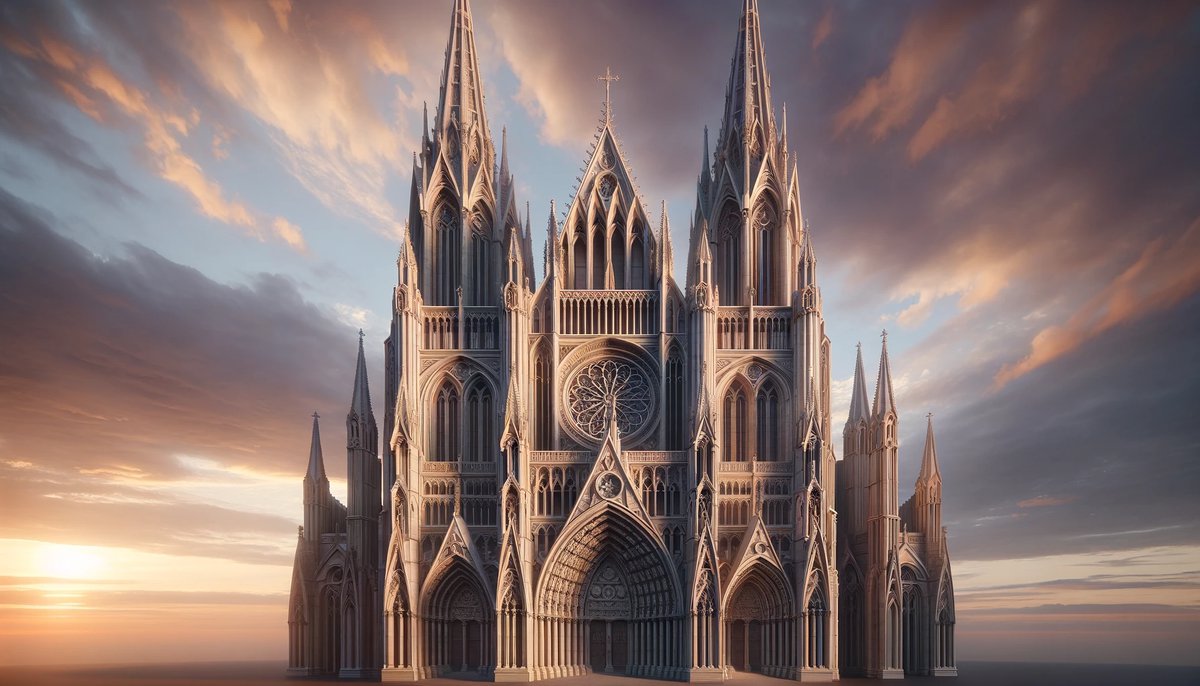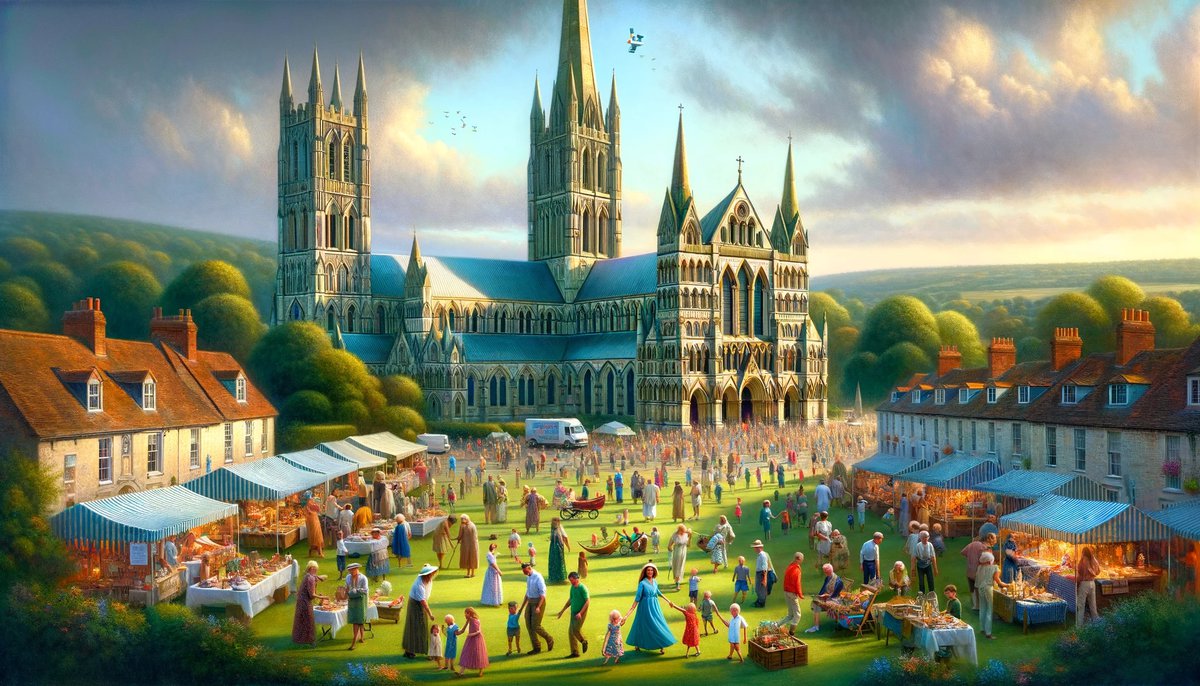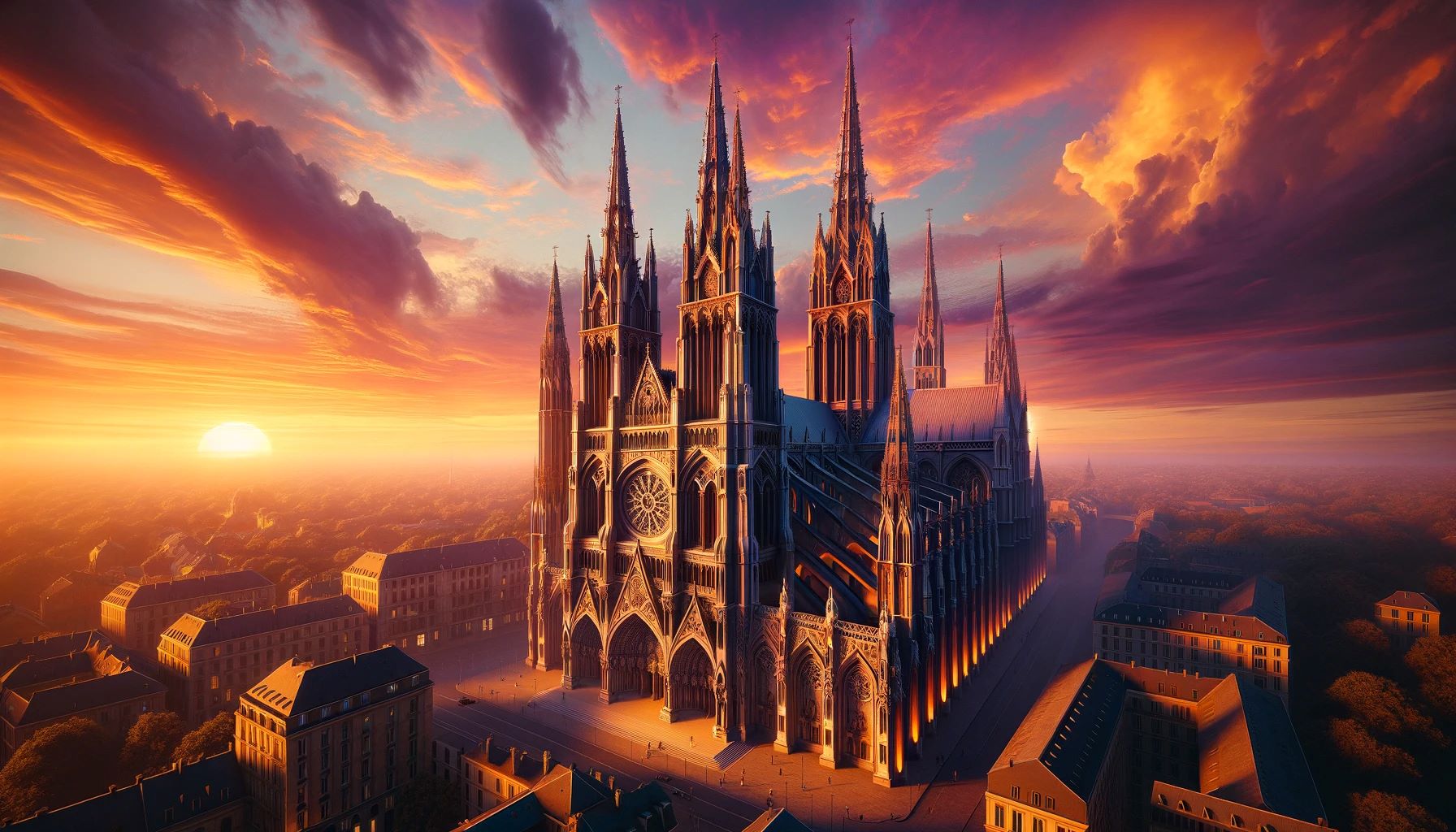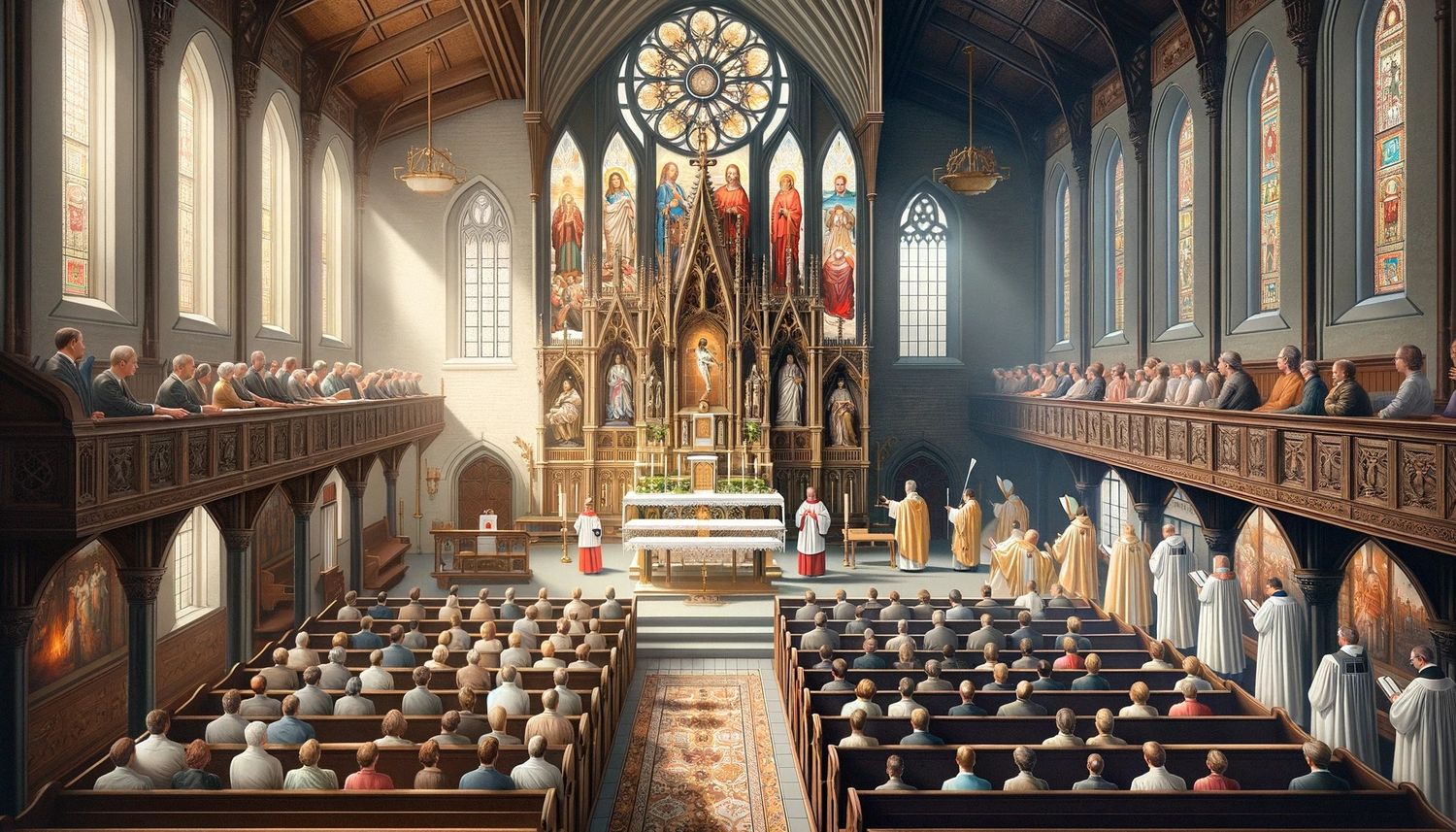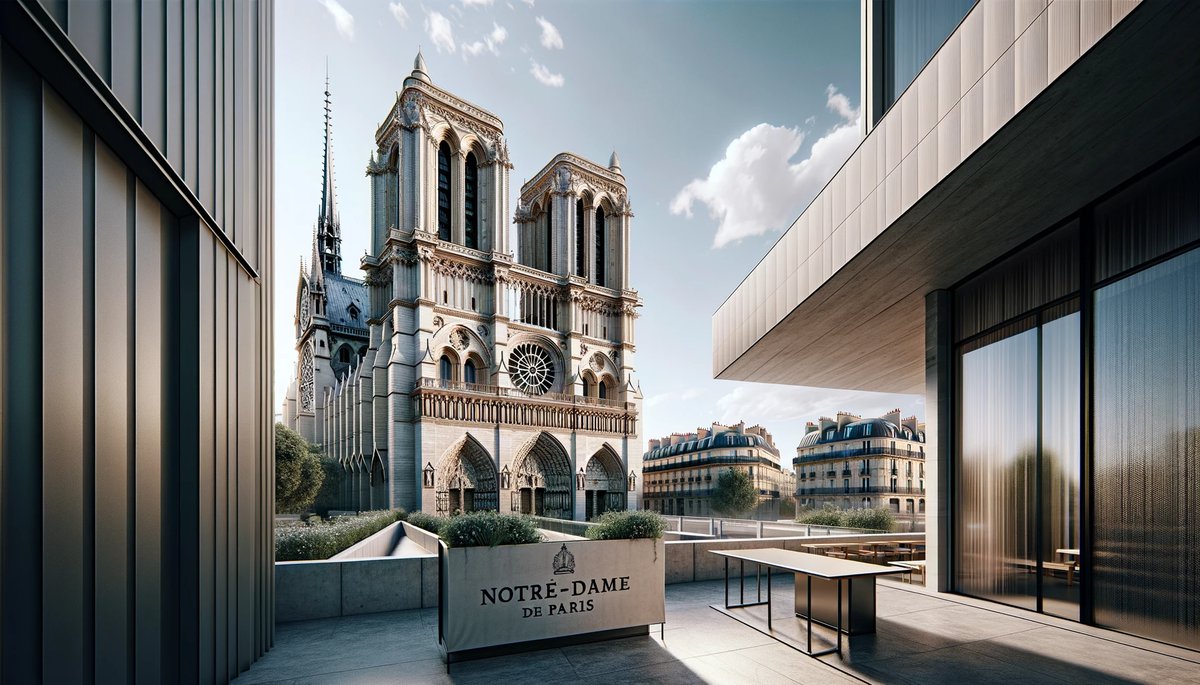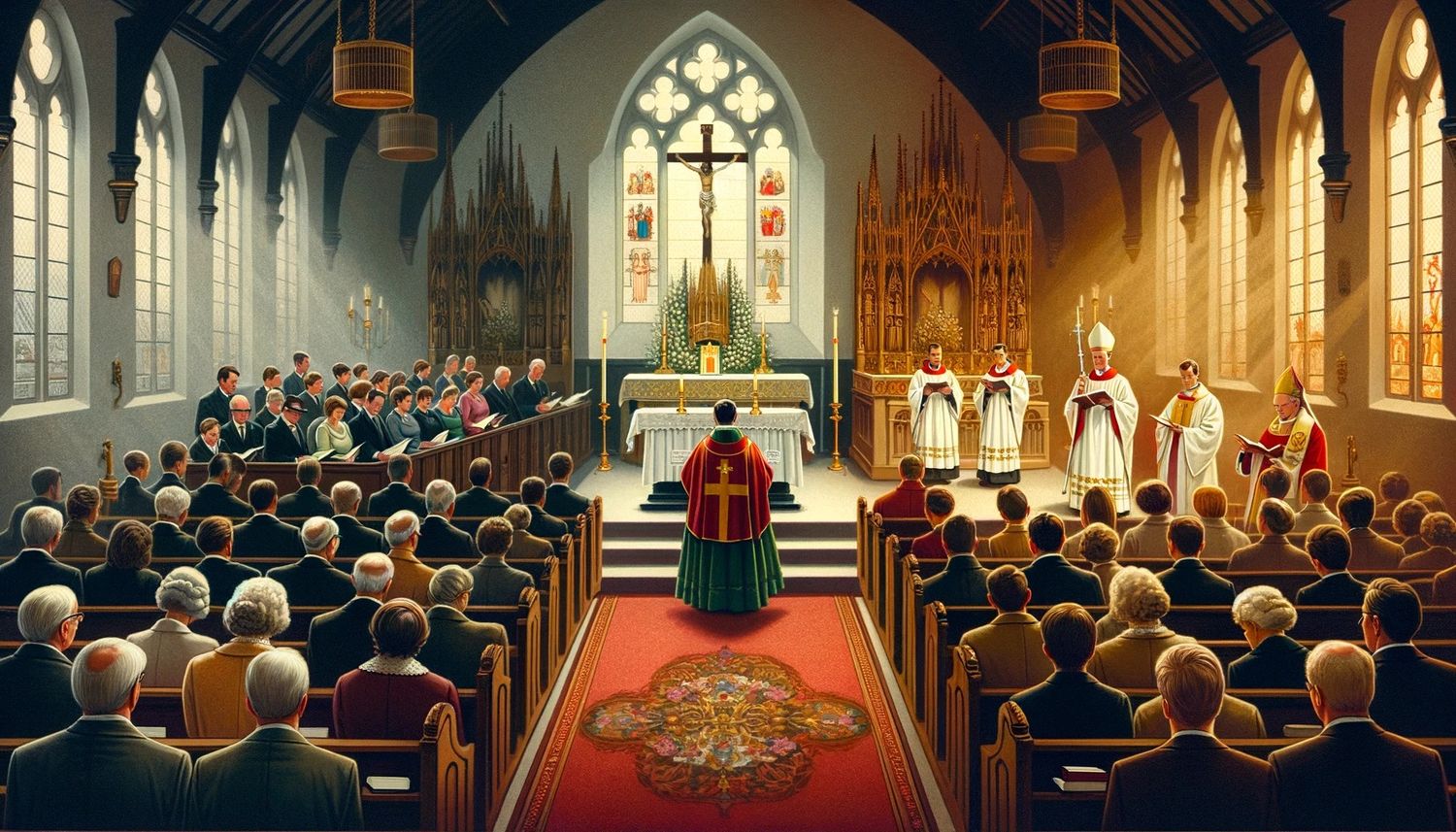Home>Arts and Culture>How Does Salisbury Cathedral Differ From Most Of The French Gothic Cathedrals
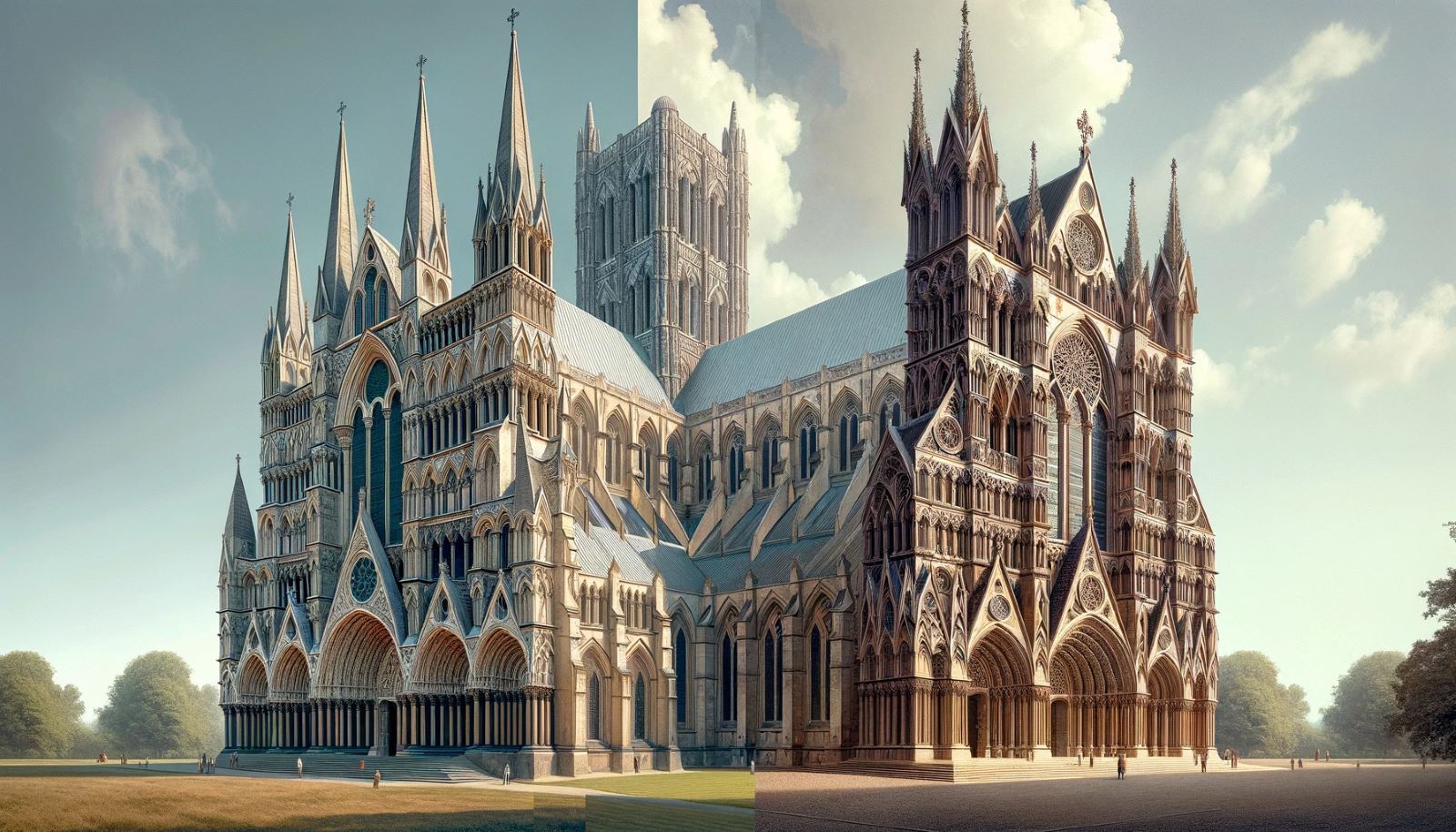

Arts and Culture
How Does Salisbury Cathedral Differ From Most Of The French Gothic Cathedrals
Published: February 16, 2024
Jason DeRose, Managing Editor at Christian.net, uses his expertise in religion and journalism to deepen understanding of faith's societal impacts. His editorial leadership, coupled with a strong academic background, enriches the platform’s diverse content, earning him recognition in both journalism and religious circles.
Discover how Salisbury Cathedral stands out from traditional French Gothic cathedrals and explore its unique architectural and cultural significance in the realm of arts and culture.
(Many of the links in this article redirect to a specific reviewed product. Your purchase of these products through affiliate links helps to generate commission for Christian.net, at no extra cost. Learn more)
Table of Contents
Introduction
Salisbury Cathedral stands as a testament to the ingenuity and craftsmanship of medieval architects and builders. Situated in the heart of the historic city of Salisbury in England, this magnificent structure is a prime example of Early English Gothic architecture. Its distinct features set it apart from the majority of French Gothic cathedrals, making it a unique and awe-inspiring marvel.
The cathedral's construction began in 1220 and was completed in a remarkably short time of 38 years, a testament to the dedication and skill of the craftsmen involved. Its design, attributed to Elias of Dereham, reflects the transition from the Romanesque style to the more refined and elegant Gothic style, characterized by pointed arches, ribbed vaults, and flying buttresses.
Salisbury Cathedral's location also sets it apart, as it is not nestled within a bustling urban landscape like many French cathedrals. Instead, it stands proudly in a spacious close, surrounded by lush greenery, creating a serene and picturesque setting that adds to its allure.
As we delve into the architectural style, building materials, interior design, stained glass windows, and spire and tower design of Salisbury Cathedral, we will uncover the distinctive elements that differentiate it from its French counterparts. Each aspect contributes to the cathedral's unique identity and serves as a testament to the creativity and vision of its creators.
Read more: Salisbury Cathedral: How It Was Built
Architectural Style
Salisbury Cathedral's architectural style epitomizes the Early English Gothic period, characterized by its emphasis on height, light, and elegance. Unlike the majority of French Gothic cathedrals, which often feature elaborate façades and intricate stone carvings, Salisbury Cathedral exudes a sense of simplicity and purity in its design. The cathedral's exterior showcases a harmonious blend of pointed arches, slender columns, and large expanses of glass, creating a strikingly vertical and ethereal appearance.
One of the most notable features of the cathedral's architectural style is its use of the "lancet" arch, characterized by its tall, narrow proportions. This distinctive arch design is prevalent throughout the structure, contributing to its vertical emphasis and graceful aesthetic. The interior of the cathedral further exemplifies the Early English Gothic style, with its soaring vaulted ceilings, slender columns, and minimalistic ornamentation. The use of pointed arches and ribbed vaults not only adds to the visual grandeur of the space but also serves a structural purpose, allowing for greater height and openness within the building.
In contrast to the elaborate and ornate façades of many French Gothic cathedrals, Salisbury Cathedral's exterior is defined by its elegant simplicity. The west front, adorned with a stunning rose window and delicate tracery, exudes a sense of refinement and understated beauty. The absence of elaborate sculptural decorations on the exterior walls sets Salisbury Cathedral apart, emphasizing the purity of its architectural form and the luminous quality of its stained glass windows.
The architectural style of Salisbury Cathedral reflects a departure from the heavily ornamented and intricately detailed French Gothic cathedrals, opting instead for a more restrained and ethereal aesthetic. Its emphasis on verticality, simplicity, and luminosity distinguishes it as a unique and captivating example of Early English Gothic architecture, standing in stark contrast to its continental counterparts.
Building Materials
Salisbury Cathedral's construction relied on a distinct choice of building materials, setting it apart from the majority of French Gothic cathedrals. Unlike the prevalent use of limestone in the construction of French cathedrals, Salisbury Cathedral was built using a local type of limestone known as Chilmark stone. This creamy white stone, quarried from the nearby village of Chilmark, imbues the cathedral with a unique luminosity and warmth, especially when illuminated by the soft English sunlight. The extensive use of Chilmark stone not only contributes to the cathedral's distinctive appearance but also reflects the resourcefulness of its builders in utilizing locally available materials.
In addition to Chilmark stone, another notable building material employed in the construction of Salisbury Cathedral is Purbeck marble. This dark, lustrous stone, quarried from the Isle of Purbeck in Dorset, was used for various decorative elements within the cathedral, including columns, shafts, and intricate carvings. The contrast between the light Chilmark stone and the rich, deep hues of Purbeck marble adds a layer of visual interest and sophistication to the cathedral's interior, creating a captivating interplay of colors and textures.
The use of these distinctive building materials not only distinguishes Salisbury Cathedral from its French counterparts but also reflects the regional character and craftsmanship of its construction. The deliberate choice of locally sourced Chilmark stone and Purbeck marble not only showcases the cathedral's unique aesthetic but also pays homage to the natural resources and artisanal traditions of the surrounding region.
The meticulous selection and utilization of these building materials underscore the cathedral's connection to the land and community from which it emerged, adding a profound sense of place and authenticity to its architectural identity. As visitors gaze upon the resplendent façade and interior spaces of Salisbury Cathedral, they are not only beholding a masterpiece of medieval architecture but also witnessing the enduring legacy of the materials and artisans that brought this extraordinary edifice to life.
Interior Design
The interior design of Salisbury Cathedral is a testament to the exquisite craftsmanship and visionary artistry of its creators. As visitors step into the sacred space of the cathedral, they are enveloped by a sense of awe and tranquility, drawn into a world of ethereal beauty and spiritual grandeur.
The soaring vaulted ceilings, supported by slender columns and pointed arches, create a sense of verticality and spaciousness that is characteristic of Early English Gothic architecture. The interior is bathed in a soft, diffused light that filters through the expansive stained glass windows, casting a kaleidoscope of colors and patterns upon the stone floors and walls. This interplay of light and shadow lends an otherworldly quality to the space, evoking a sense of reverence and wonder.
The nave, with its graceful arcades and unadorned elegance, leads the eye toward the high altar, the focal point of the cathedral's interior. The simplicity of the architectural elements allows the eye to focus on the celestial beauty of the stained glass windows, which depict a rich array of biblical narratives, saints, and angels. These windows, renowned for their luminous hues and intricate tracery, infuse the interior with a transcendent glow, inviting contemplation and reflection.
The choir, enclosed by delicate wrought-iron screens, exudes an air of intimacy and serenity, providing a sacred space for choral performances and worship. The intricately carved wooden choir stalls, adorned with delicate foliage motifs and figurative sculptures, stand as a testament to the skill and artistry of medieval woodworkers.
The Lady Chapel, located at the eastern end of the cathedral, is a sanctuary of ethereal beauty and spiritual resonance. Its soaring windows, adorned with delicate tracery and vibrant stained glass, create a luminous and contemplative atmosphere, inviting visitors to pause and meditate in its hallowed embrace.
The interior design of Salisbury Cathedral, with its harmonious blend of architectural elements, stained glass, and decorative details, captivates the senses and elevates the spirit. It stands as a timeless testament to the transcendent power of human creativity and the enduring allure of sacred spaces.
The meticulous attention to detail and the seamless integration of architectural and artistic elements within the cathedral's interior exemplify the profound spiritual and aesthetic aspirations of its creators. As visitors traverse the hallowed halls and chapels of Salisbury Cathedral, they are transported to a realm of sublime beauty and profound spirituality, where the divine and the human converge in a symphony of light, form, and faith.
Stained Glass Windows
The stained glass windows of Salisbury Cathedral stand as radiant masterpieces of medieval artistry, infusing the sacred space with a transcendent luminosity and spiritual narrative. These exquisite windows, renowned for their kaleidoscopic hues and intricate tracery, are a defining feature that sets Salisbury Cathedral apart from many of its French Gothic counterparts.
The cathedral boasts an exceptional collection of stained glass dating from the 13th to the 20th century, offering a captivating visual chronicle of biblical narratives, saints, and celestial visions. The windows, with their delicate leaded framework and vibrant palette, serve as illuminated manuscripts of faith, inviting contemplation and wonder.
One of the most renowned windows is the "Doom Window" located in the north transept, a stunning depiction of the Last Judgment. This monumental composition, dating back to the 13th century, mesmerizes viewers with its vivid portrayal of the divine drama of salvation and damnation. The intricate details and emotive expressions captured within the panels convey a powerful narrative that transcends time, evoking a profound sense of awe and introspection.
The cathedral's Chapter House is adorned with a remarkable series of 13th-century windows, renowned for their delicate tracery and vibrant hues. These windows, depicting scenes from the Old and New Testaments, envelop the space in a luminous tapestry of sacred narratives, inviting visitors to immerse themselves in the rich visual storytelling of the Christian tradition.
The Lady Chapel, with its resplendent east window, is a testament to the ethereal beauty and spiritual resonance of stained glass art. This magnificent composition, dating from the 19th century, bathes the chapel in a celestial glow, illuminating the sacred space with its radiant hues and intricate detailing. The window's intricate tracery and vibrant palette create a transcendent atmosphere, inviting contemplation and reverence.
The stained glass windows of Salisbury Cathedral, with their timeless beauty and profound storytelling, serve as a testament to the enduring power of visual art in conveying spiritual truths and inspiring devotion. As visitors gaze upon these resplendent windows, they are not only witnessing the mastery of medieval craftsmanship but also experiencing a profound connection to the divine narratives and spiritual aspirations that have shaped the cathedral's legacy.
The luminous beauty and emotive power of the stained glass windows at Salisbury Cathedral stand as a testament to the enduring legacy of medieval craftsmanship and the transcendent potential of visual art to elevate the human spirit. These resplendent windows, with their vibrant hues and intricate narratives, continue to captivate and inspire visitors, inviting them to behold the timeless beauty and spiritual resonance of this extraordinary art form.
Spire and Tower Design
The spire and tower design of Salisbury Cathedral stands as a crowning achievement of medieval architecture, embodying a harmonious blend of elegance, structural ingenuity, and spiritual symbolism. At a height of 404 feet, the cathedral's spire holds the distinction of being the tallest in Britain, soaring skyward with ethereal grace and commanding presence.
The spire, constructed in the 14th century, is a marvel of engineering and artistry, characterized by its slender form and delicate tracery. Crafted from the same creamy Chilmark stone that graces the cathedral's exterior, the spire ascends with a sense of weightless beauty, culminating in a delicate finial that seems to reach toward the heavens. Its soaring height and ethereal appearance evoke a sense of transcendence, inviting contemplation and wonder.
The tower, known as the "Old Sarum Tower," predates the spire and serves as a sturdy foundation for this soaring architectural marvel. Its massive stone walls, adorned with lancet windows and intricate carvings, exude a sense of timeless strength and resilience. The tower's lower levels house the cathedral's magnificent clock, a testament to the enduring legacy of medieval craftsmanship and technological innovation.
The spire and tower design of Salisbury Cathedral not only exemplify the technical prowess of its builders but also convey profound spiritual symbolism. The spire, reaching toward the heavens, serves as a tangible expression of humanity's aspiration for divine connection and transcendence. Its ethereal form and soaring height inspire awe and reverence, inviting visitors to gaze skyward and contemplate the mysteries of faith and existence.
The tower, with its solid and grounded presence, provides a counterpoint to the spire's ethereal grace, symbolizing the earthly foundations of faith and community. Together, the spire and tower form a harmonious union of celestial aspiration and earthly rootedness, embodying the cathedral's role as a bridge between the divine and the human experience.
As visitors behold the majestic spire and tower of Salisbury Cathedral, they are not only witnessing a triumph of medieval architecture but also experiencing a profound connection to the spiritual and artistic aspirations that have shaped this extraordinary edifice. The spire and tower stand as enduring symbols of human creativity, faith, and the timeless pursuit of beauty and meaning, inviting all who behold them to partake in a journey of wonder and contemplation.
Conclusion
In conclusion, Salisbury Cathedral stands as a remarkable testament to the ingenuity, artistry, and spiritual aspirations of medieval architecture. Its distinctive architectural style, building materials, interior design, stained glass windows, and spire and tower design set it apart from the majority of French Gothic cathedrals, endowing it with a unique and captivating identity.
The cathedral's architectural style, characterized by its emphasis on height, light, and elegance, reflects the Early English Gothic period with its pointed arches, ribbed vaults, and soaring verticality. This departure from the elaborate façades and intricate stone carvings of French cathedrals showcases Salisbury Cathedral's emphasis on simplicity and luminosity, creating a sense of ethereal beauty and grace.
The deliberate choice of locally sourced Chilmark stone and Purbeck marble in the cathedral's construction not only distinguishes it from its French counterparts but also pays homage to the natural resources and artisanal traditions of the surrounding region. This connection to the land and community imbues the cathedral with a profound sense of place and authenticity, adding to its architectural significance.
The interior design of Salisbury Cathedral, with its soaring vaulted ceilings, delicate stained glass windows, and intricate decorative details, creates a transcendent atmosphere that elevates the spirit and inspires contemplation. The interplay of light and shadow, the harmonious blend of architectural elements, and the captivating storytelling of the stained glass windows converge to create a sacred space of timeless beauty and spiritual resonance.
The spire and tower design of the cathedral, with its soaring height and ethereal grace, embody a profound symbolism of humanity's aspiration for divine connection and transcendence. The juxtaposition of the spire's celestial reach and the tower's earthly rootedness encapsulates the cathedral's role as a bridge between the divine and the human experience, inviting visitors to partake in a journey of wonder and contemplation.
As visitors traverse the hallowed halls and chapels of Salisbury Cathedral, they are not only beholding a masterpiece of medieval architecture but also experiencing a profound connection to the spiritual and artistic aspirations that have shaped this extraordinary edifice. The cathedral stands as a timeless testament to the enduring power of human creativity, faith, and the pursuit of beauty and meaning, inviting all who behold it to partake in a journey of wonder and contemplation.

